Château de Villandry: An 18th Century Marvel
Standing tall among the rural vales of the Loire Valley stands the imposing Château de Villandry. Built to impress royalty, the château was once a medieval fortress used for peace discussions between Philip II and Richard the Lionheart of England. It remained in the Le Breton family for many generations and developed into its present glory. This fabulous French country house features the quintessential grey slate roofs that you’d come to expect with grand châteaux, flanked with a fairytale turreted tower.
The spectacular Château de Villandry is most famous for its magnificent Renaissance gardens, featuring formal boxwood hedging laid out in intricate geometric patterns. With so much to offer, it’s not difficult to see why this château has been recognised with World Heritage Site status.
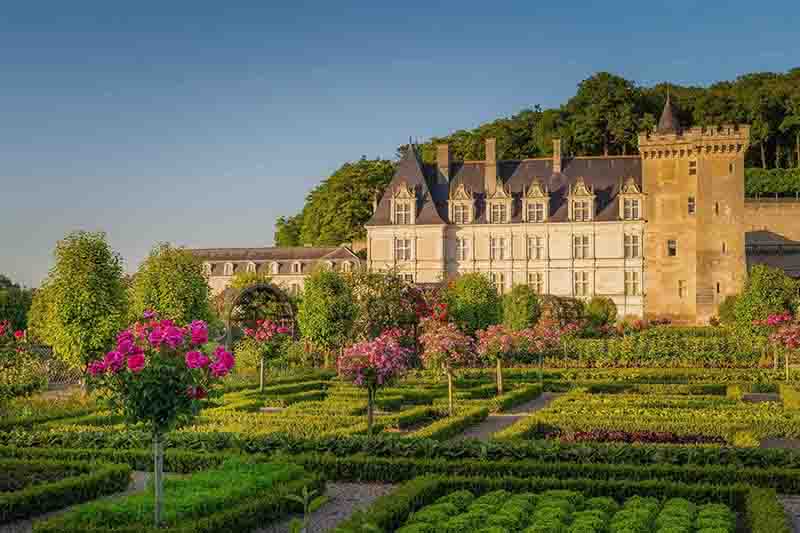
What can you see at Château de Villandry?
Originally founded in the 12th century, Château de Villandry is built in a U-shape around a central courtyard. The château’s external façade was heavily influenced by Italian architecture, following the Franco-Italian (or Habsburg–Valois) Wars of 1494-1559. The exterior design of the château features light tufa stone, intricately displayed with ornate carvings.
The château commands views of stunning formal landscapes, opening to views of the Loire Valley, River Cher and River Loire. Its gardens are perhaps its most famous feature. Designed by Joachim Carvallo, they showcase several styles, including medieval, Renaissance and French. Paying homage to his great-grandfather’s vision, the château’s current owner, Henri Cavallo, designed the famed ‘Sun Garden’ which opened to the public in 2008. Here, visitors can explore three chambers – The Children’s Chamber, The Sun Chamber, and The Cloud Chamber – all with their own unique features. A labour of love, the formal gardens highlight many types of colourful flowering plants and can be enjoyed in every season.
Inside the Château de Villandry, guests can experience extravagant neoclassical interiors with gilded fittings, sumptuous silk and Spanish old master paintings. Restored and refitted by the Count of Castellane, the château’s interiors are some of the grandest in France and are representative of 18th century tastes.
Key parts of the château to visit include The Keep – the only medieval part to the manor house to remain today, acting as a stark reminder of its previous life as a fortress. Keep your eyes peeled for ‘holes’ in the wall dating back to the 18th century, when the fortress was once under attack! In the kitchen, visitors will have a chance to see how meals were prepared for the household using produce sourced from the kitchen gardens themselves.
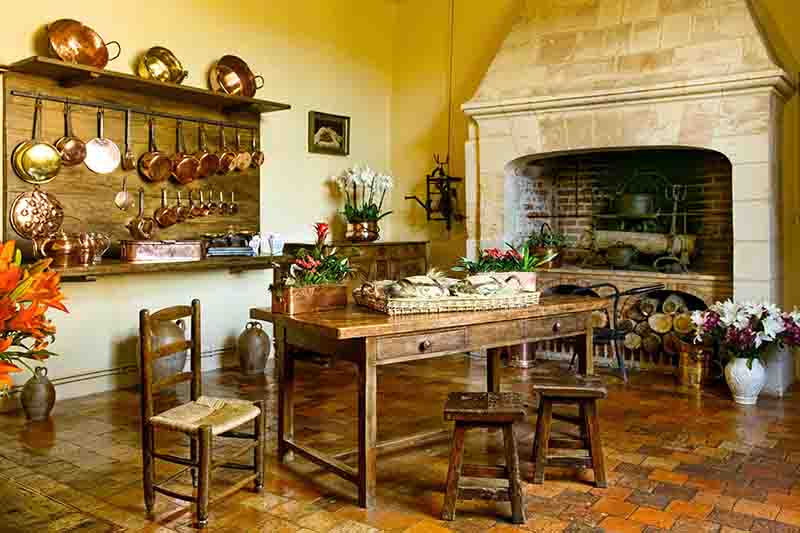
The History of Château de Villandry
The story of the Château de Villandry actually began in the eleventh century, when the region was known as ‘Colombiers’. The territories in France in this period were unstable following their unification by the Emperor Charlemagne, and the Château de Villandry was a fortress occupying a defensive position within France. It was at this Loire Valley château that Philip ‘Augustus’ II of France and Richard ‘The Lionheart’ I of England would meet to discuss peace in 1189; ultimately ending the war between the countries.
A Renaissance Château
In 1532, Château de Villandry was given a new lease of life when it was acquired by Jean Le Breton, King Francis I’s Financial Secretary and Controller-General for War. To impress the King, he immediately set about modernising the dilapidated fortress, transforming it into a traditional French château. Inspired by Le Breton’s travels in Italy, Château de Villandry fits the Renaissance concepts of a ‘pleasant place’. In order to fit this criterion, a ‘pleasant place’ was defined as needing a stream, shade, a gentle breeze, flowers, plants, trees and fruit. Villandry is fortunate enough to have all these features and it’s also surrounded by a moat, nourished with fresh water!
Renovated around the original keep, an additional wing was built by Jean Le Breton to provide symmetry in the ‘U’ shape that is recognisable today. The façade of the new wing was enhanced with arcades, mullioned windows edged with carved pilasters, high-roof windows surrounded with sculpted gables and topped with sloping slate roofs. The result converted Château de Villandry from a medieval fortress into an inviting Renaissance palace.
After Le Breton’s death, Château de Villandry remained in the family for more than two more centuries. In 1543, Le Breton’s widow received Francis I himself at the residence. One century later in 1639, the Château was officially renamed ‘Villandry’, rather than ‘Colombiers’. Villandry was chosen as it matched the name of another piece of land that was owned by Jean Le Breton.
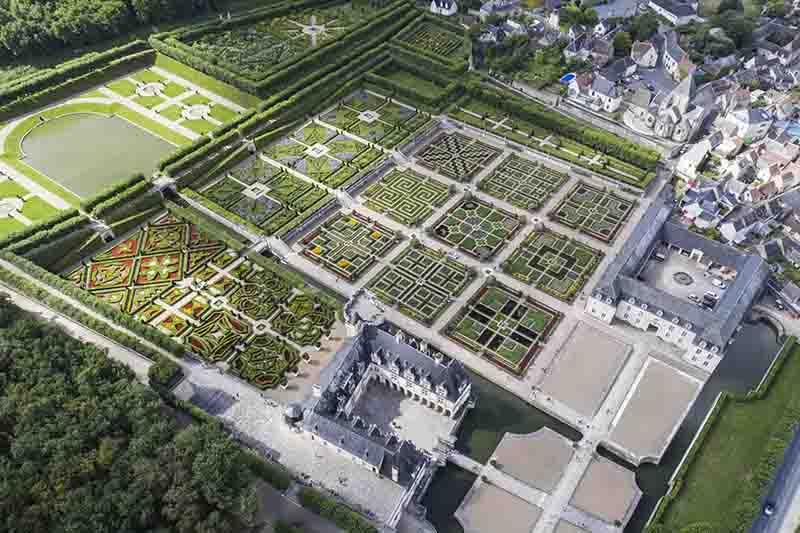
An Eighteenth Century Marvel
In 1754, Château de Villandry underwent another renovation. This time, the exterior of the fortress was largely left alone, the new owner focusing instead on the gardens and interior. The purchaser was King Louis XV’s ambassador, Michel-Ange de Castellane. The count came from an old family and is renowned as a leading tastemaker of his time. He had the building made more comfortable, with the installation of wood panelling, which helped to insulate the spacious rooms.
Château de Villandry was furnished beautifully with neoclassical charm. Of particular historic interest are the wrought iron banisters bearing Michel-Ange de Castellane’s initials, and a panelled dining room painted in a warm salmon-pink colour with a chequered floor. In addition, the grounds were cleared and redesigned in the French style that was popular at the time. The result was a warm and inviting family home that oozed style and luxury.
The French Revolution brought financial difficulties for the Castellane family and the Loire Valley château was confiscated. After changing hands many times and having its gardens re-landscaped into the English Garden style, it was acquired by Napoleon for his brother, Jérôme Bonaparte in the early 1800s. However, this too was short-lived, and on Napoleon’s downfall, Château de Villandry fell into a state of disrepair.
In 1906, the property was purchased by Joachim Carvallo and his wife, Ann Coleman. The pair lovingly restored the property, undertaking maintenance on the building and redesigning the flora in the Renaissance style, creating one of Europe’s best gardens to visit. By 1934, the château had been acknowledged as a historic monument. Still owned by the Carvallo family today, Château de Villandry is a major visitor attraction.
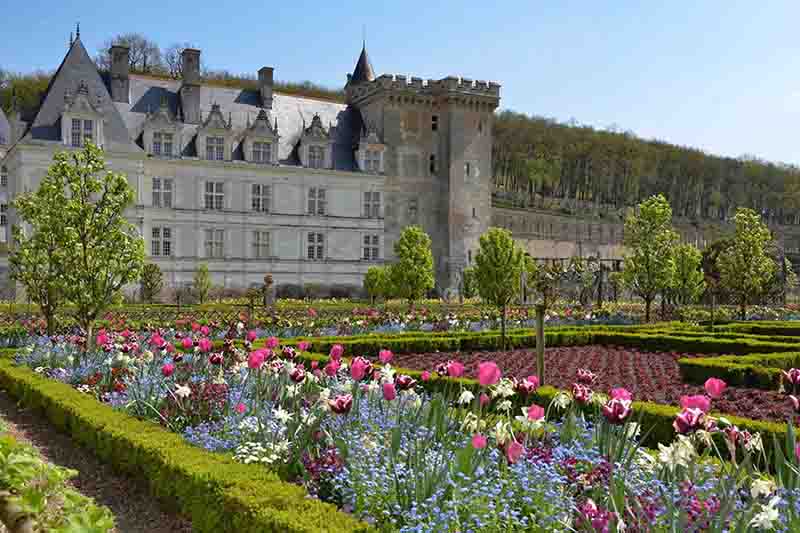
What can you do at the Château de Villandry?
Guests to Château de Villandry can experience the sumptuous interiors of Château de Villandry, taking in its neoclassical décor, stunning furniture and valuable art collections. Stroll through the Renaissance-styled gardens to admire the neat, box-trimmed hedges. Visitors will find ponds, lakes and water features amongst well-planted flowers beds. The garden highlights include a water garden, ornamental flower garden and vegetable garden, which all benefit from breathtaking views of the surrounding Loire Valley.
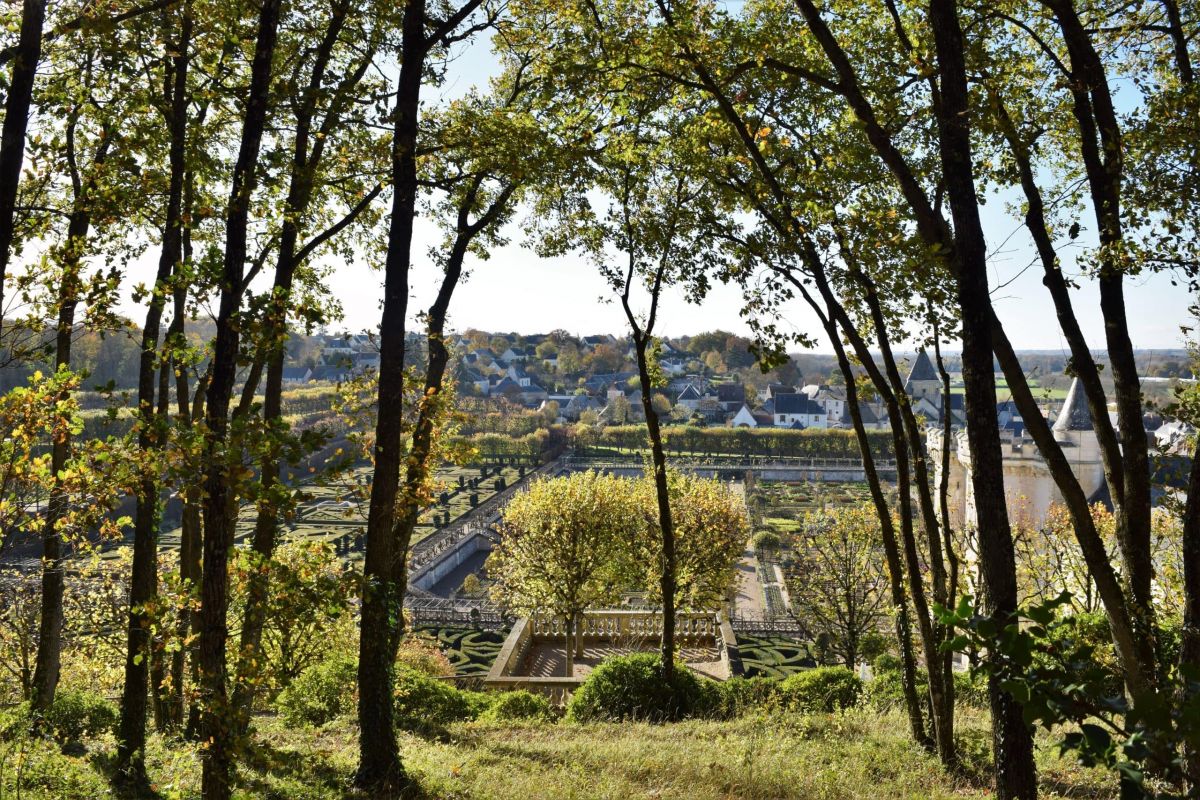
Barge the Loire Valley with European Waterways
Barge the River Cher aboard hotel barge Nymphea for an unforgettable vacation in the Loire Valley. Enjoy a unique experience with European Waterways, where you will have the opportunity to experience one of the few flat-bottomed vessels able to cruise the shallow waters of the River Cher. For more information about Nymphea order a free copy of our brochure or speak to a member of our team via our handy Contact Form
 English
English
 Spanish
Spanish French
French German
German Norwegian
Norwegian Portuguese
Portuguese Swedish
Swedish Italian
Italian Russian
Russian Simplified Chinese
Simplified Chinese Japanese
Japanese